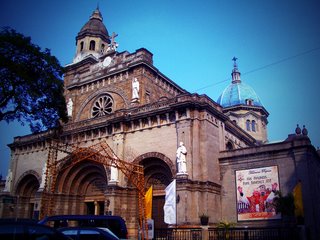 Here’s a profiler of Daniela Hantuchova, my favorite woman tennis player. Born on April 23, 1983 at Poprad, Slovakia, she presently resides in Monte Carlo, Monaco. Standing at a modelesque height of 5’11 ¼” (1.81m) and weighs in at 123 lbs (56 kgs.), she’s a right-handed player and returns the ball with a two handed back hand. She turned professional on 1999 and won her first career singles championship at the Indian Wells in 2002. She achieved her highest WTA career singles ranking at No.5 on January 27, 2003 which was considered as her best year so far in pro tennis.
Here’s a profiler of Daniela Hantuchova, my favorite woman tennis player. Born on April 23, 1983 at Poprad, Slovakia, she presently resides in Monte Carlo, Monaco. Standing at a modelesque height of 5’11 ¼” (1.81m) and weighs in at 123 lbs (56 kgs.), she’s a right-handed player and returns the ball with a two handed back hand. She turned professional on 1999 and won her first career singles championship at the Indian Wells in 2002. She achieved her highest WTA career singles ranking at No.5 on January 27, 2003 which was considered as her best year so far in pro tennis. She plays on court using Yonex racquets and wears Nike clothes and Nike Vapor S2 tennis shoes. Presently ranked at No. 15 in the WTA Rankings, her favorite surface is grass and considers the Wimbledon as her favorite tournament.
She plays on court using Yonex racquets and wears Nike clothes and Nike Vapor S2 tennis shoes. Presently ranked at No. 15 in the WTA Rankings, her favorite surface is grass and considers the Wimbledon as her favorite tournament. An energetic and gutsy player, she displays sobriety under pressure and she never questions any bad calls, a wholesome attitude in her that I would admire the most. She doesn’t grunt like Maria Sharapova which I find too unfeminine. I might say, she’s more of a finesse player comparable to the likes of Chris Evert during her younger days. I love the way Daniela smiles and how she makes it look so easy to play graceful tennis. I’ve read about how loyal she was to Ai Sugiyama who’s been her doubles partner for quite sometime. Rumours had it that she declined playing with Martina Hingis in doubles play because she wants to stick it out with Ai Sugiyama. A depiction and epitome of how loyalty and friendship should be!
An energetic and gutsy player, she displays sobriety under pressure and she never questions any bad calls, a wholesome attitude in her that I would admire the most. She doesn’t grunt like Maria Sharapova which I find too unfeminine. I might say, she’s more of a finesse player comparable to the likes of Chris Evert during her younger days. I love the way Daniela smiles and how she makes it look so easy to play graceful tennis. I’ve read about how loyal she was to Ai Sugiyama who’s been her doubles partner for quite sometime. Rumours had it that she declined playing with Martina Hingis in doubles play because she wants to stick it out with Ai Sugiyama. A depiction and epitome of how loyalty and friendship should be!The most memorable match I’ve seen of her was when she lost to Maria Sharapova in Round of 16 at the 2006 Australian Open. The dream match I would love to see most is how a match between two of my favorite woman players, Daniela Hantuchova and Ana Ivanovic, would turn out to be if they play against each other. I wouldn’t cheer for anyone of them but would be glad to see who’s going to be the more finesse player.
photo credits belong to Robyn Wilson and you can read more about pro tennis tour at her Planet Tennis Fan blog while you can view more of her photos thru Flickr.





